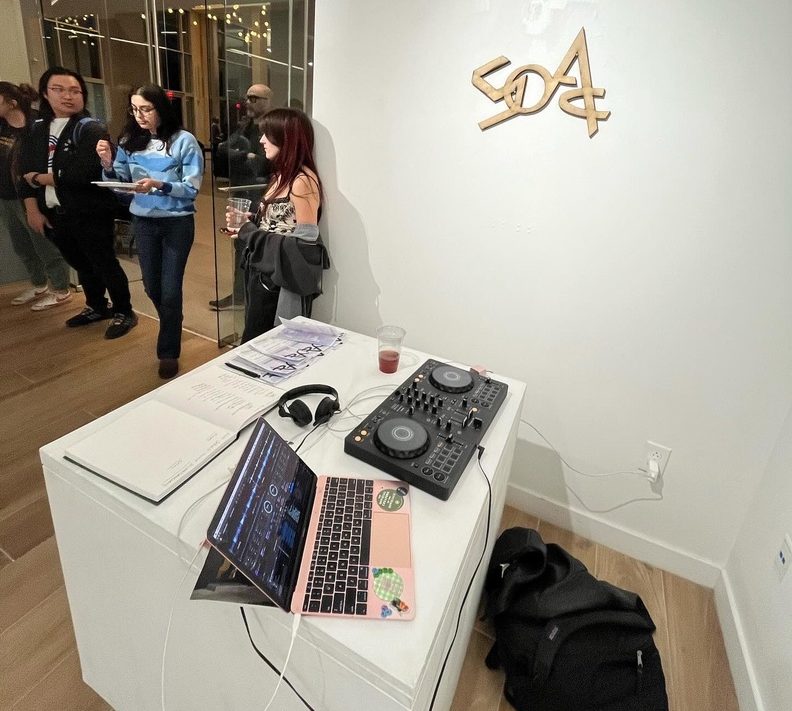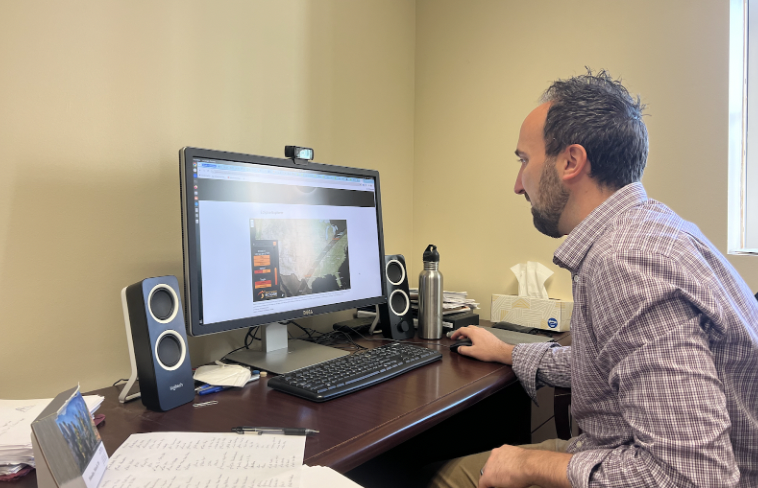Masses of people crowded around the red wall impatiently looking over the heads of those in front of them as if a celebrity was on the other side. Yet these eager visitors were here to see a different kind of superstar, one whose name was not in lights but rather on a white placard.
Three young women stand in a trio, all dressed in Frida Kahlo’s iconic outfit, complete with floral headpieces. They stare in awe at Kahlo’s most well-known work “Las dos Fridas.” One of the three Fridas expressed that she could see how Kahlo had endured so much pain in her life. A little girl clings to her mother, asking her questions about the exhibit in Spanish. Another older man passionately talks about his favorite pieces.
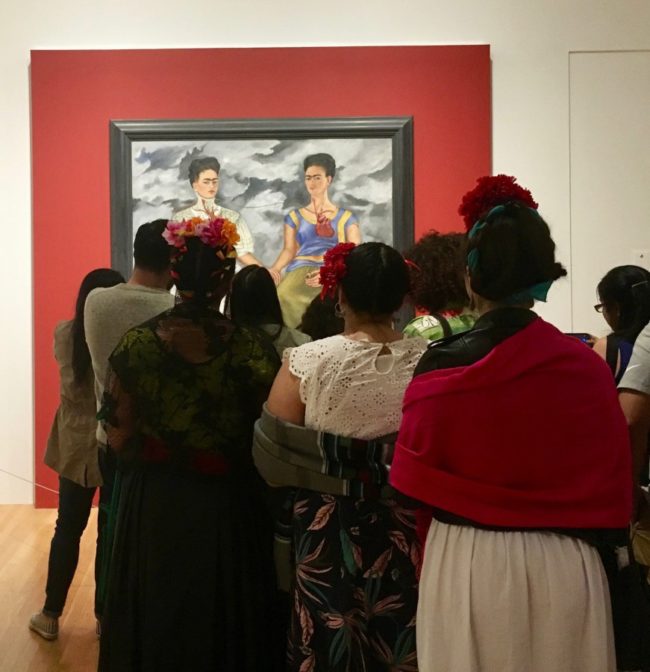
Faces young and old are flocking to the Dallas Museum of Art to see what may be a once-in-a-lifetime show for many. “México 1900–1950: Diego Rivera, Frida Kahlo, José Clemente Orozco, and the Avant-Garde” houses some of the most well-known and influential pieces of Mexican art from the first half of the 20th century.
When the DMA released an announcement that they were bringing a new exhibit all the way from Paris, immediate excitement ensued. Yet there was one problem: the DMA needed help, and they needed it quickly.
The exhibit was slated for a March opening, giving the museum only three months to open what would regularly take a year or more to execute. One SMU graduate student lent a hand in getting the show off the ground.
“We created a strategic initiative through the Latino Center for Leadership Development to bring support, bring volunteers, help fundraise, help coordinate whatever we need to do to in order to support the exhibit,” ‘Yo Soy DMA’ director Jose Santoyo said.
With the help of the 170 volunteers at ‘Yo Soy DMA’, over 2,000 guests attended on opening day alone. Those numbers are expected to rise as this is the first and only time the exhibit will be showing in the US.

The exhibit itself was vast, taking up two separate gallery spaces. Museum-goers entered on the fourth floor gallery filled with pieces from the first half of the exhibit. It was organized thematically, starting with pre-Revolutionary academic paintings and ending at the beginning of Mexican Revolution. The fourth floor gallery housed paintings and sculptures that confront ideas of Mexican romanticism and modern symbolism.
“I love some of Diego Rivera’s murals, especially that one with the indigenous people,” Santoyo said. “I feel like that’s a part of our culture that has been eradicated over the years.”
One of the most compelling parts of the exhibit was the level of detail the curator and gallery designers put into it. Every written element including the small plaques identifying the art were in English and Spanish, an act of inclusivity and attention to the exhibit’s audience.
Santoyo expressed this kind of inclusivity in ‘Yo Soy DMA’, pinpointing its message down to the name.
“It’s called ‘Yo Soy DMA’ because we wanted people that probably never felt like they could go to the museum or be a part of the museum to feel included, especially the growing Hispanic community in Dallas, which is like 40 percent Hispanic,” Santoyo said.
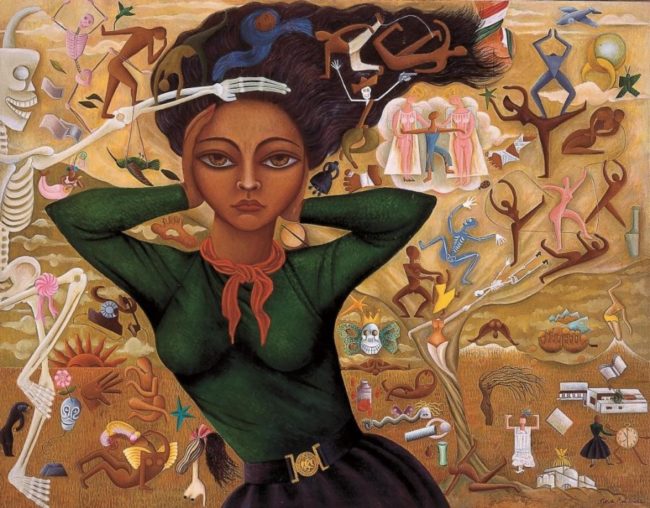
Downstairs, the exhibit continued in the main gallery space. Here the work started to get more modern, with two large video pieces bisecting different rooms. Brightly painted spaces reflected the brightness of Mexican life. Large murals were posed against a yellow backdrop.
The room opened up to the star of the show: “Las dos Fridas” by Kahlo. Sometimes called the ‘Mona Lisa of Mexican Art’, this painting evokes Kahlo’s inner struggles between two facets of herself. On one side, Kahlo is dressed as a traditional Mexican “Tehuana” and as a European woman on the other.
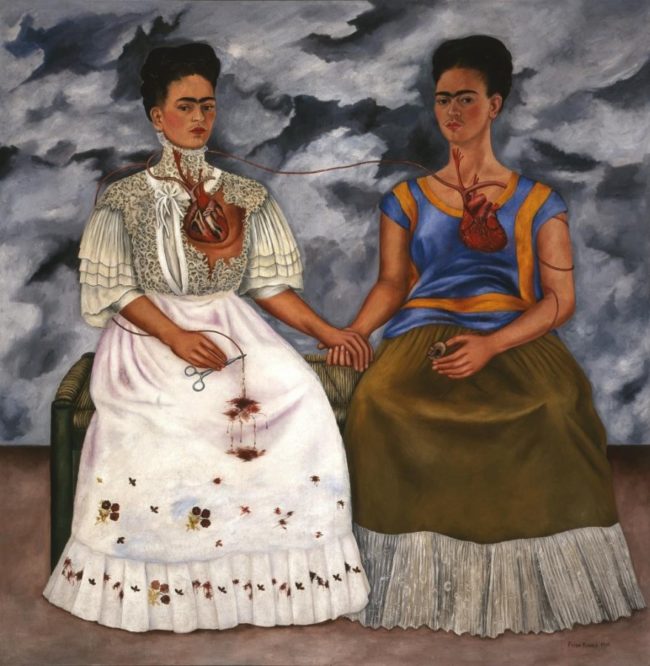
“’Art that I can relate to.’ That’s one of the comments I read online, somebody was saying how they were almost crying when they were looking at some of the art,” Santoyo said. “It’s a very emotional experience to see yourself, to see black and brown faces that are a lot of times not reflected in art.”
The exhibit ended with more surrealist art, including political cartoons, sculptures and colorful paintings. The Dallas Museum of Art has created an exhibit that truly delves into the Mexican culture and displays the artistic responses to the Revolution and changing political climates.
SMU freshman Colleen Elliott visited the exhibit for her Spanish class and discovered artistic expression of these political changes.
“I thought it was interesting to see how the art had changed over the years and how it was influenced by the changing society,” Elliott said.
‘Mexico’ will be on display through July 16 at the Dallas Museum of Art. Visit dma.org for more information on ticket pricing.
“It’s art, it’s beautiful, it’s something that everybody enjoys, it’s relaxing, it’s something that gets the community together,” Santoyo said.











